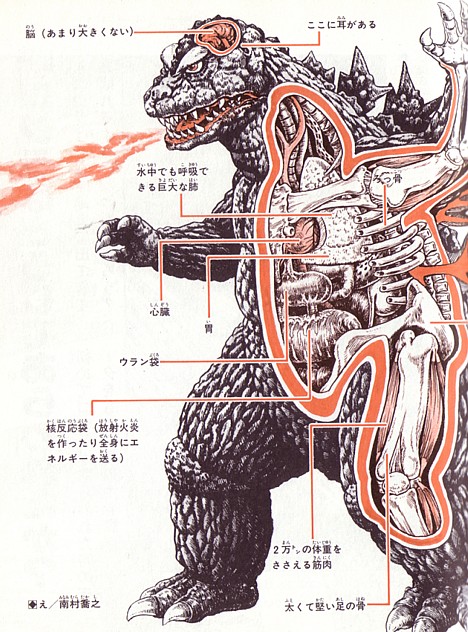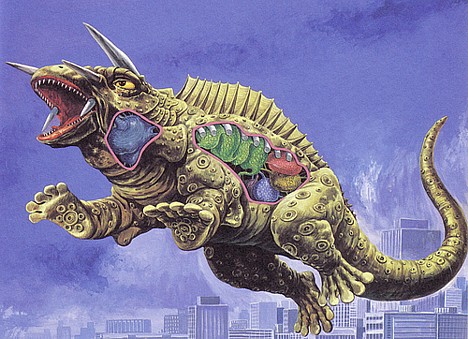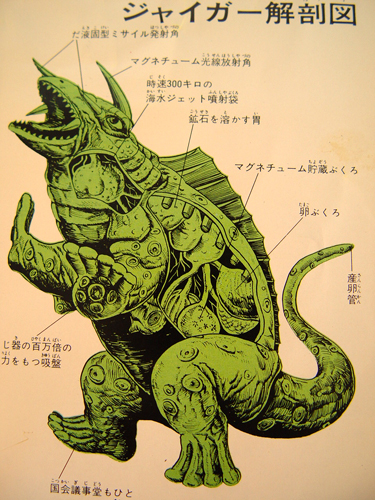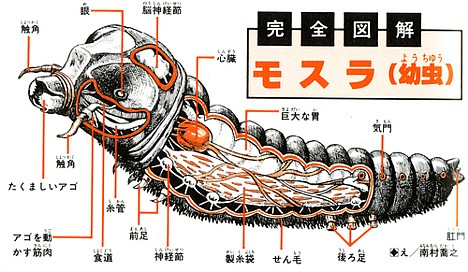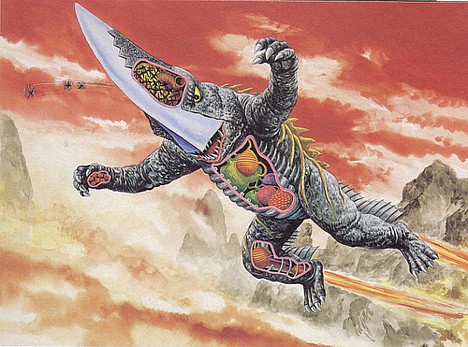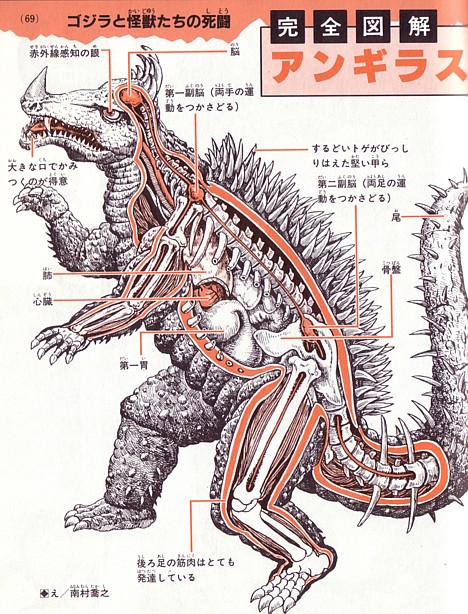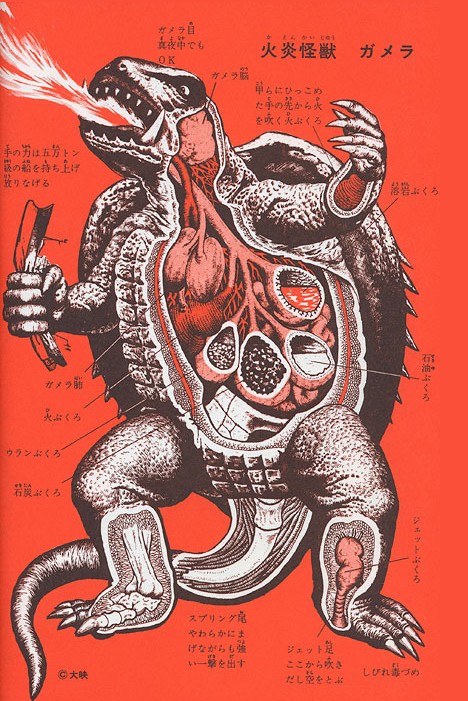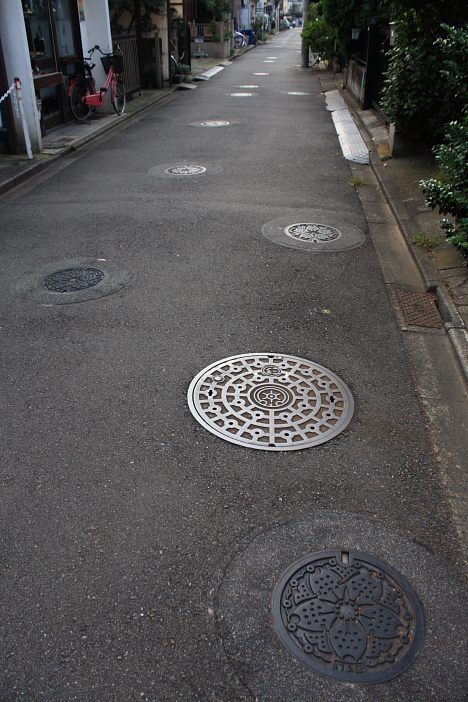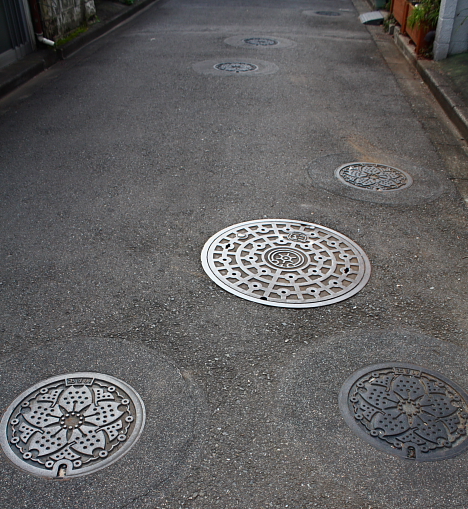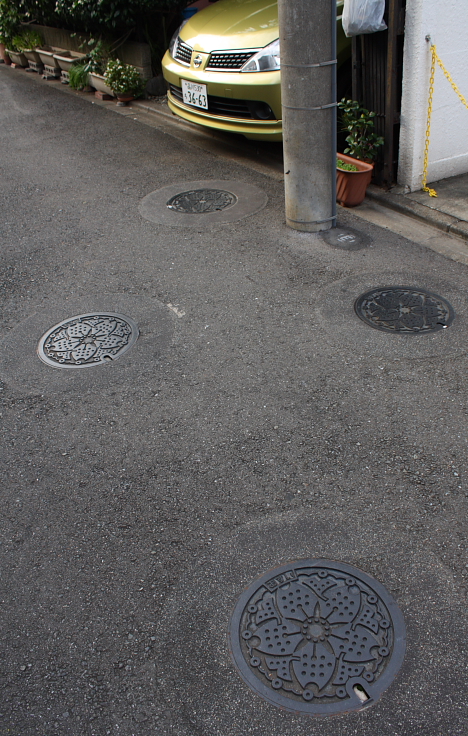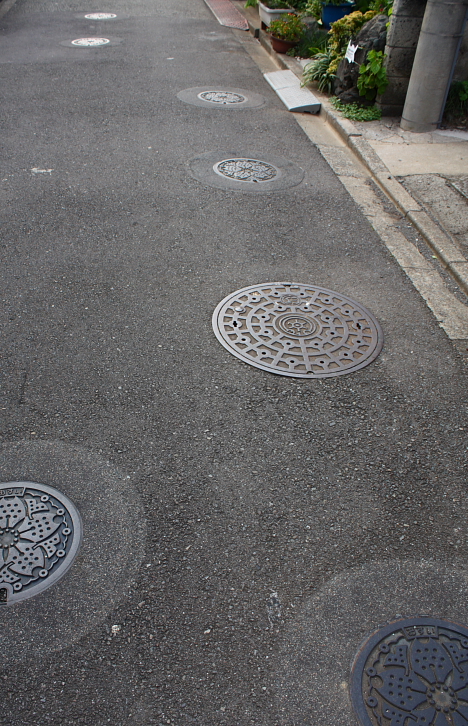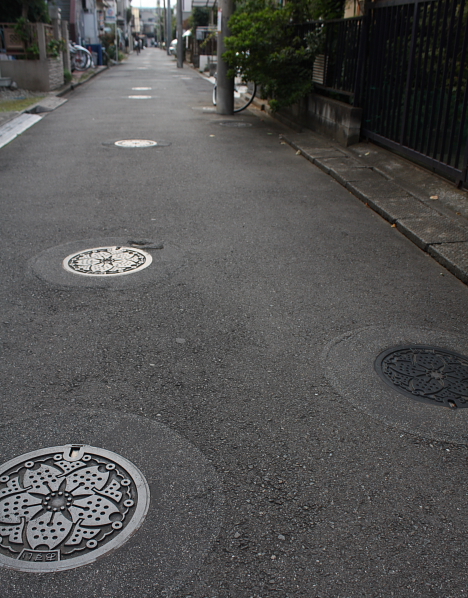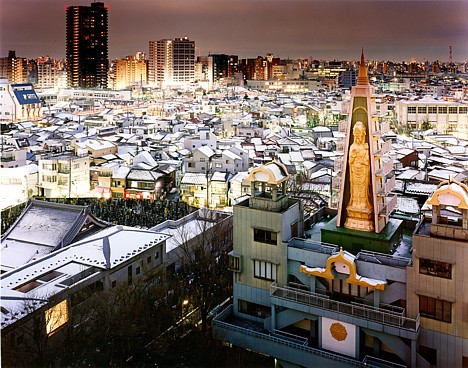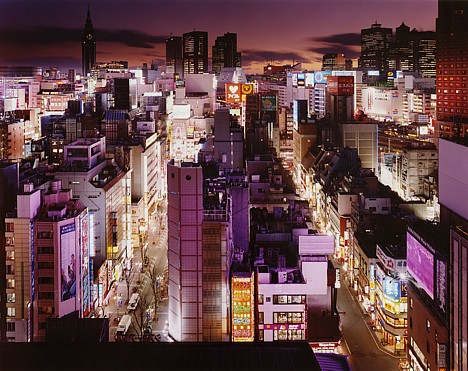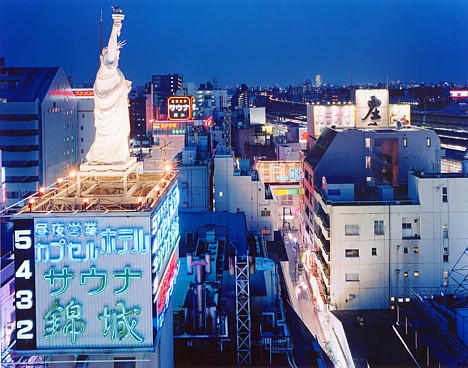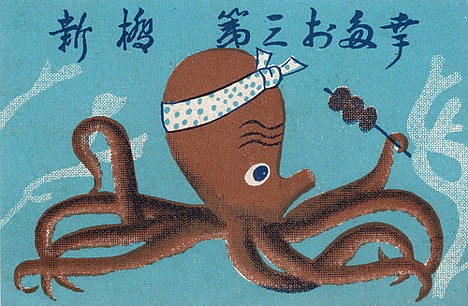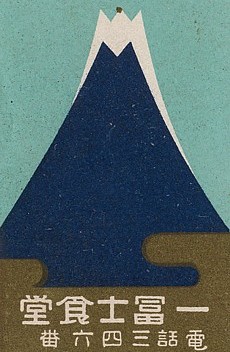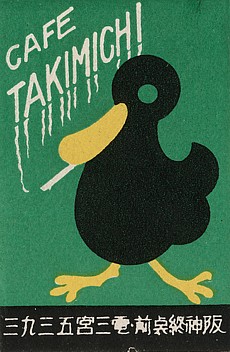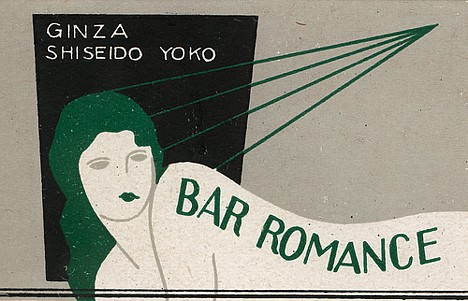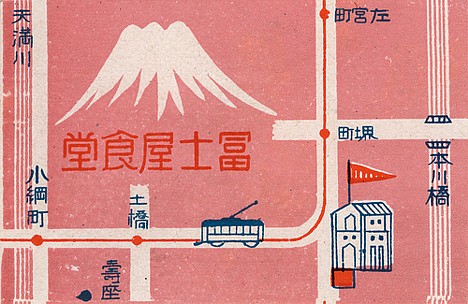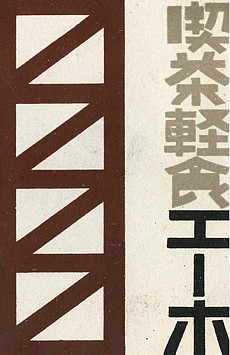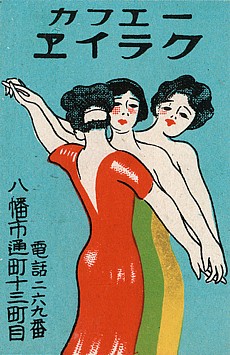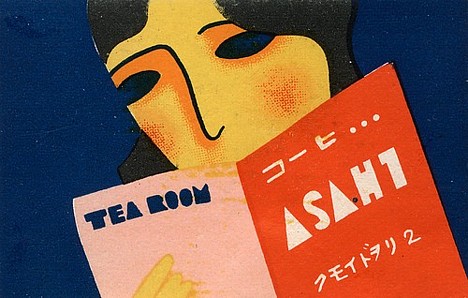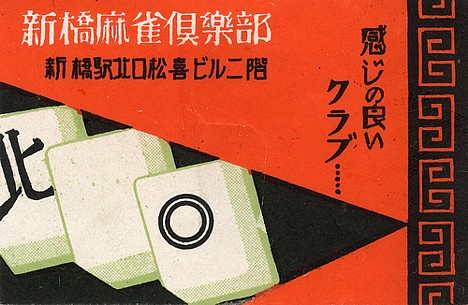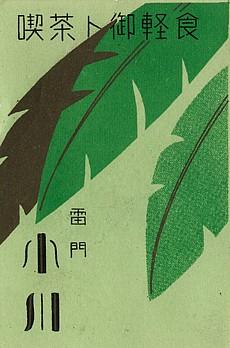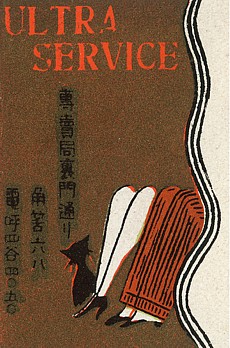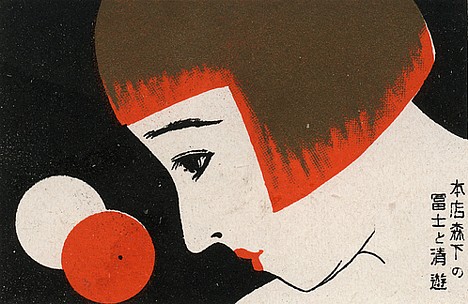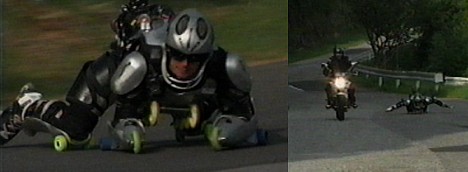For a brief period in the mid-1870s, artistic woodblock prints known as "newspaper nishiki-e" were a popular form of mass entertainment in Japan. These colorful prints fed the public's enormous appetite for sensationalism by retelling shocking stories culled from the major newspapers of the day. The Meiji government swiftly cracked down on the publishers of these "unofficial" sources of information, causing them to disappear as quickly as they had appeared, but not before hundreds of issues had been published and circulated around Japan. While newspaper nishiki-e most often retold stories of scandalous or heinous crimes, they occasionally presented accounts of monsters, ghosts and mysterious happenings, such as the ones included here.
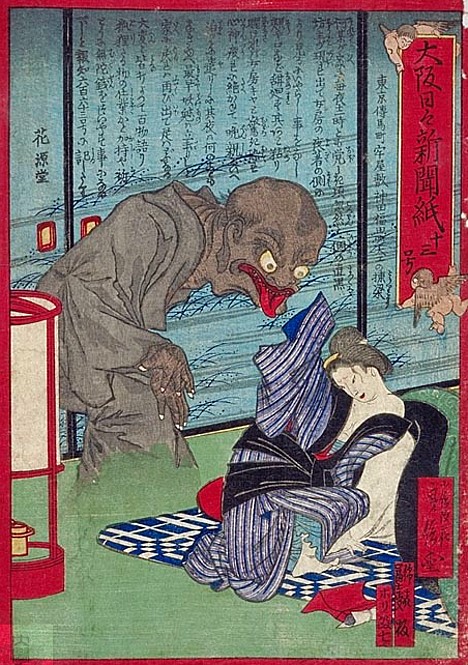
Osaka Nichinichi Shinbunshi, No. 13 (ca. 1875)
This print shows a lecherous monster said to have haunted the home of a master carpenter in the Kanda area of Tokyo. The apparition habitually showed up late at night to perform unspeakable acts on his sleeping wife, until the family enlisted the help of prayer-chanting priests to cleanse their home. In the Meiji era, recurring nightmares about this sort of monster were apparently quite common.
* * * * *
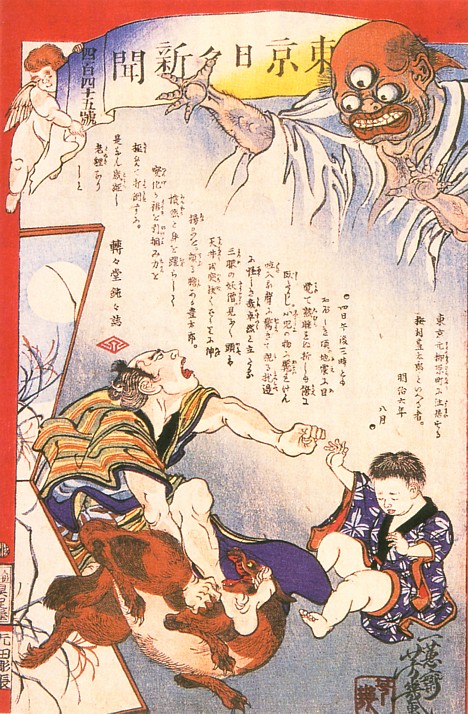
Tokyo Nichinichi Shinbun, No. 445 (1874)
In the early morning hours of August 4, 1873, a man named Umemura Toyotaro was awakened by an earthquake. As he struggled to get back to sleep, his child, who lay nearby, suddenly burst out crying hysterically. The man looked up to find a strange, three-eyed monk standing over them. He watched in disbelief as the mysterious monk grew taller and taller, until his head reached the ceiling. Unrattled, the man grabbed the monk's sleeve and pulled him to the ground. The monk turned out to be an old shape-shifting tanuki.
* * * * *
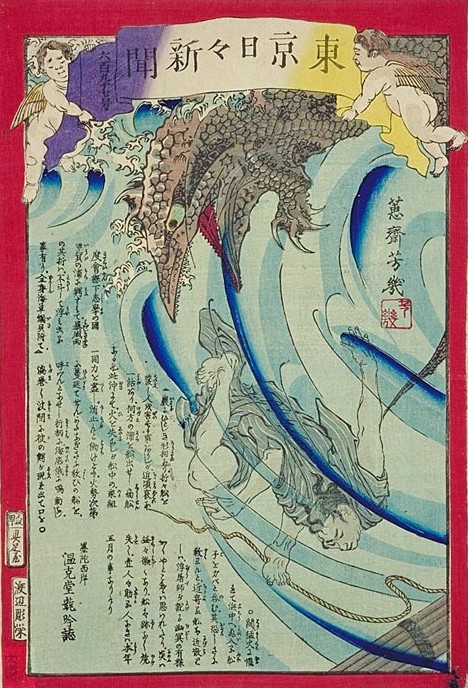
Tokyo Nichinichi Shinbun, No. 697 (May 25, 1874)
This print depicts a giant alligator inhabiting the Koga inlet of eastern Mie prefecture. The feared sea monster, which was described as being covered in seaweed and oysters, was known to attack ships and devour anyone thrown overboard. One day a ship in the area caught fire. As the crew abandoned the burning vessel, the creature ate them all.
* * * * *
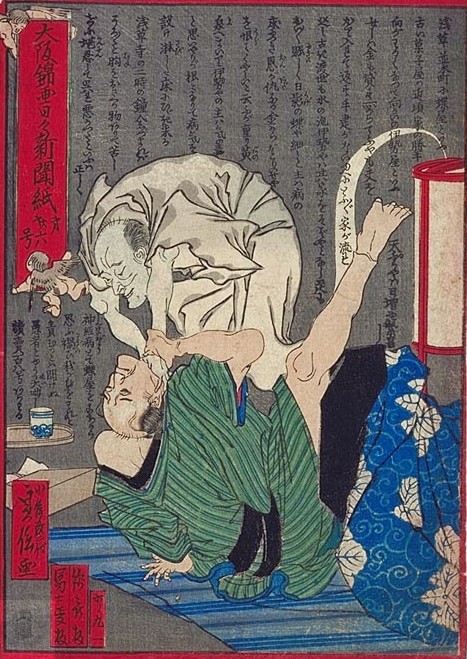
Osaka Nishiki-e Nichinichi Shinbunshi, No. 26 (ca. 1875)
This print shows the ghost of a disgruntled candy store owner who grew ill and died after falling deep in debt to his neighbor, the owner of a successful tempura restaurant. The ghost has returned to settle the score.
* * * * *
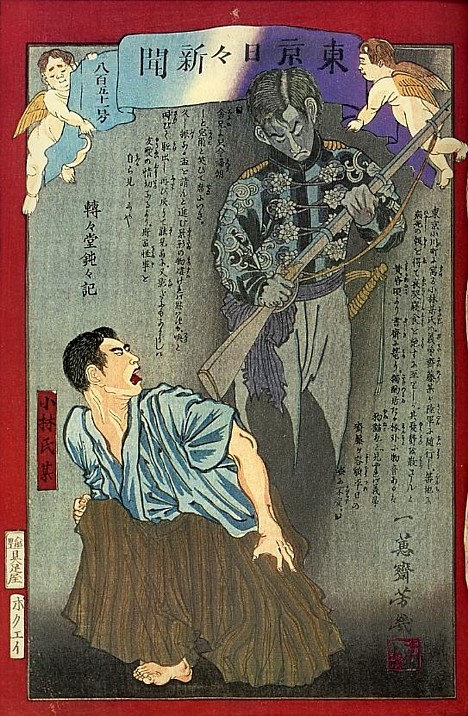
Tokyo Nichinichi Shinbun, No. 851 (1874)
In 1874, the Imperial Japanese Army and Navy embarked on the Taiwan Expedition of 1874, their first ever overseas deployment. This print depicts the restless spirit of a young Japanese soldier named Saito who died from illness during the mission. Saito's ghost returned home for several days to haunt his brother-in-law, who had grown very depressed after learning of Saito's fate.
* * * * *
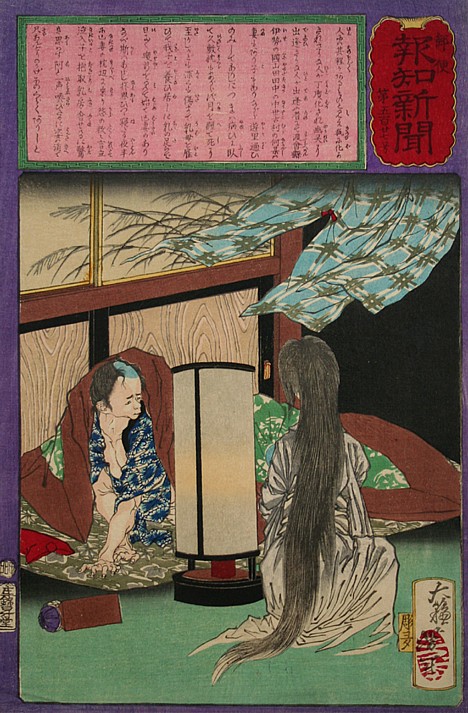
Yubin Hochi Shinbun, No. 527 (1875)
This print shows the restless ghost of a woman whose husband neglected her so much that she fell ill and died. Upset at the way he was raising their young child, she returned from the spirit world to complain in his ear while he slept. The baby woke up and began to cry, so she cradled it in her arms and began to nurse it. When the man awoke and screamed at the sight of his undead wife, she vanished.
* * * * *
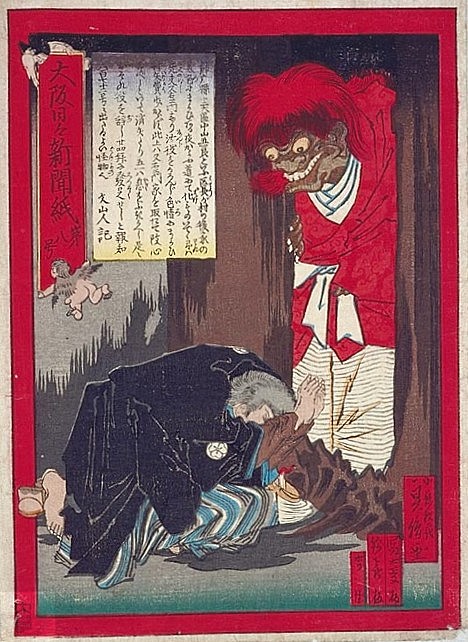
Osaka Nichinichi Shinbun, No. 8 (ca. 1875)
Despite appearances, this monster means no harm. The helpful creature is attempting to reform a failed Hyogo-area politician named Nakayama, who neglected his responsibilities after falling victim to a widow's charms.
* * * * *
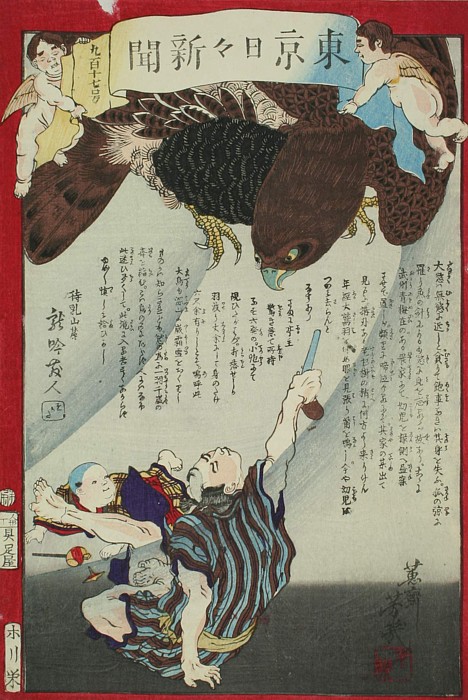
Tokyo Nichinichi Shinbun, No. 917
When a man stepped outside onto his veranda to check on his crying child, he was alarmed to find a gigantic eagle sitting in a cedar tree overhead. The creature, which stood taller than a grown man, was staring hungrily down at the child. In a panic, the man grabbed his gun and shot the menacing bird from its perch. The enormous size of the carcass astounded him.
* * * * *
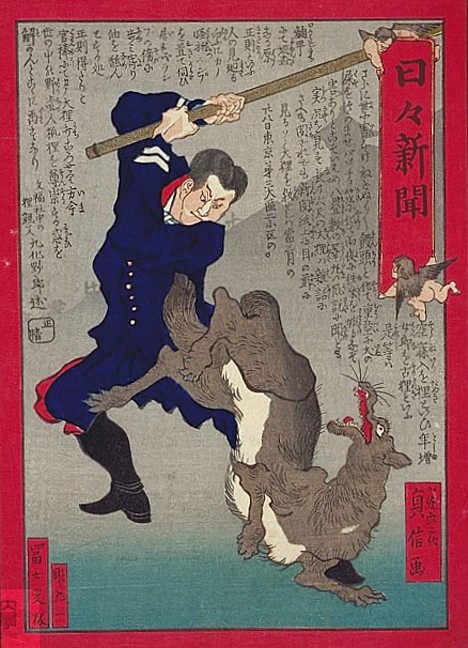
Nichinichi Shinbun (ca. 1875)
This print shows a policeman capturing a tanuki, a mythical trickster animal known for its ability to outwit humans. This nishiki-e can be viewed as a reflection of the identity struggle that Japan was experiencing at the time, with the tanuki symbolizing Japan's traditional past and the policeman symbolizing the "enlightened" modern society that rapidly emerged after the Meiji Restoration of 1868.
[Some scans via: Waseda University Library // Further reading: News nishikie]
Related:
- 19th-century ghost scrolls
- Edo-period monster paintings by Sawaki Suushi
